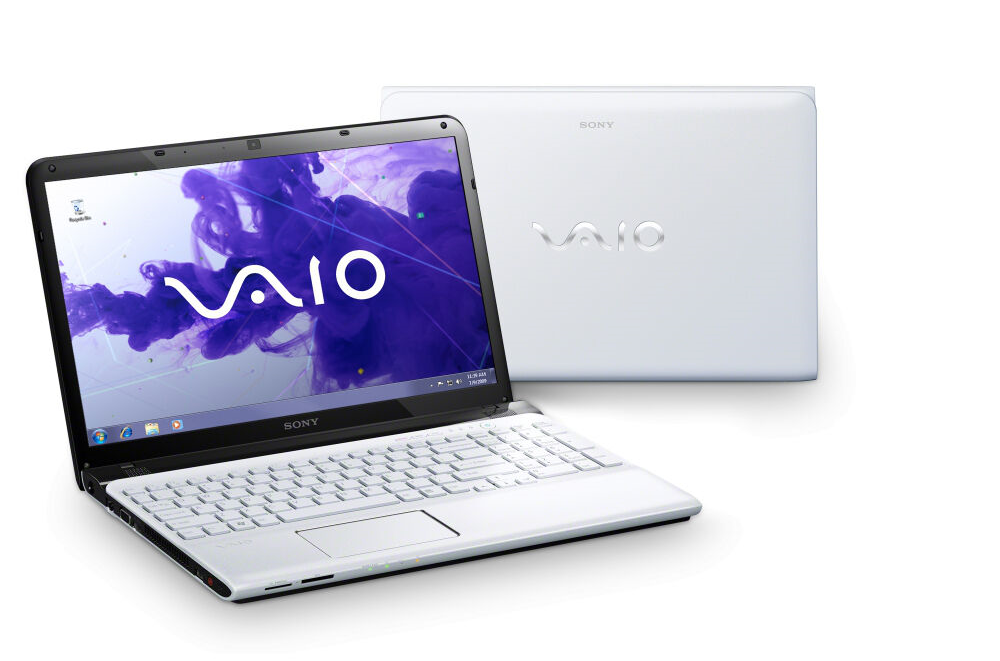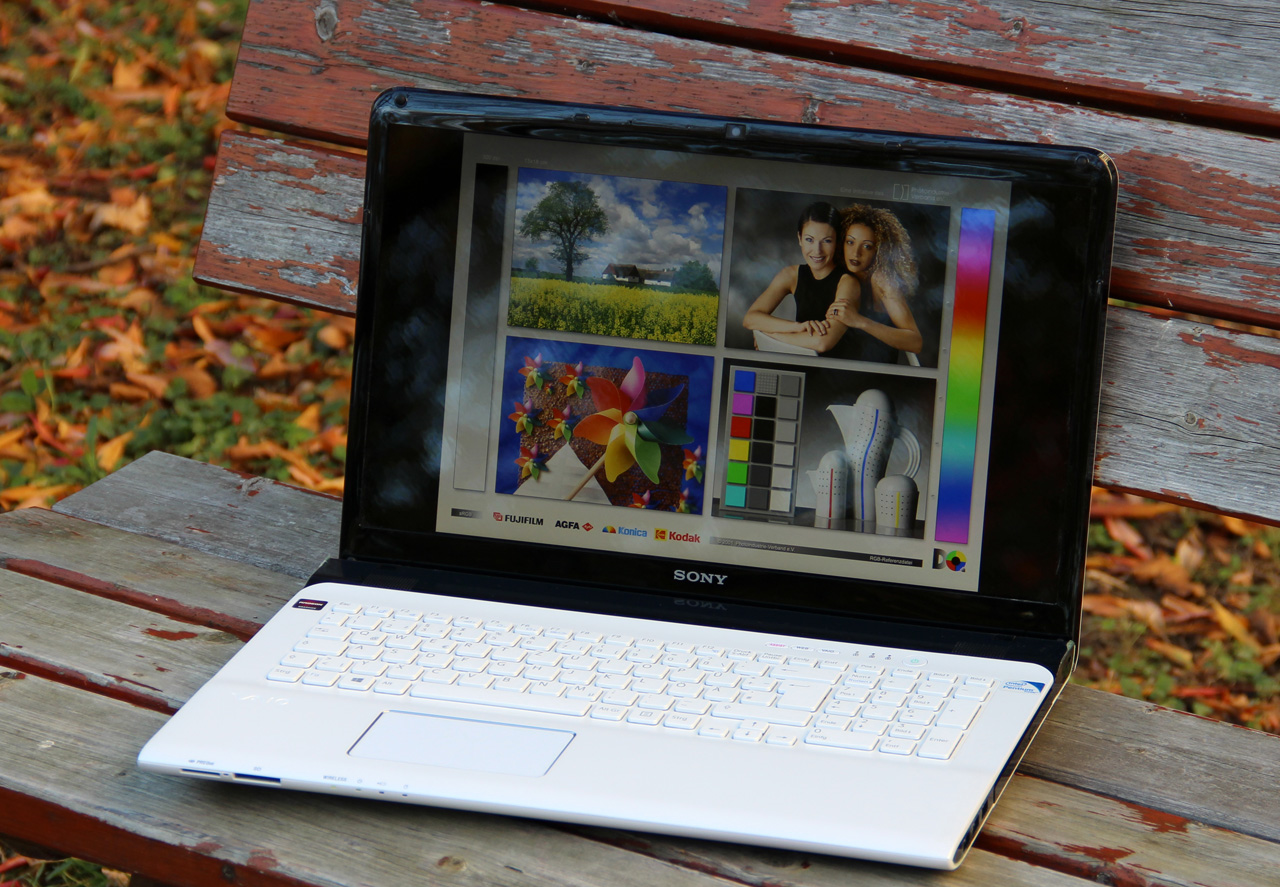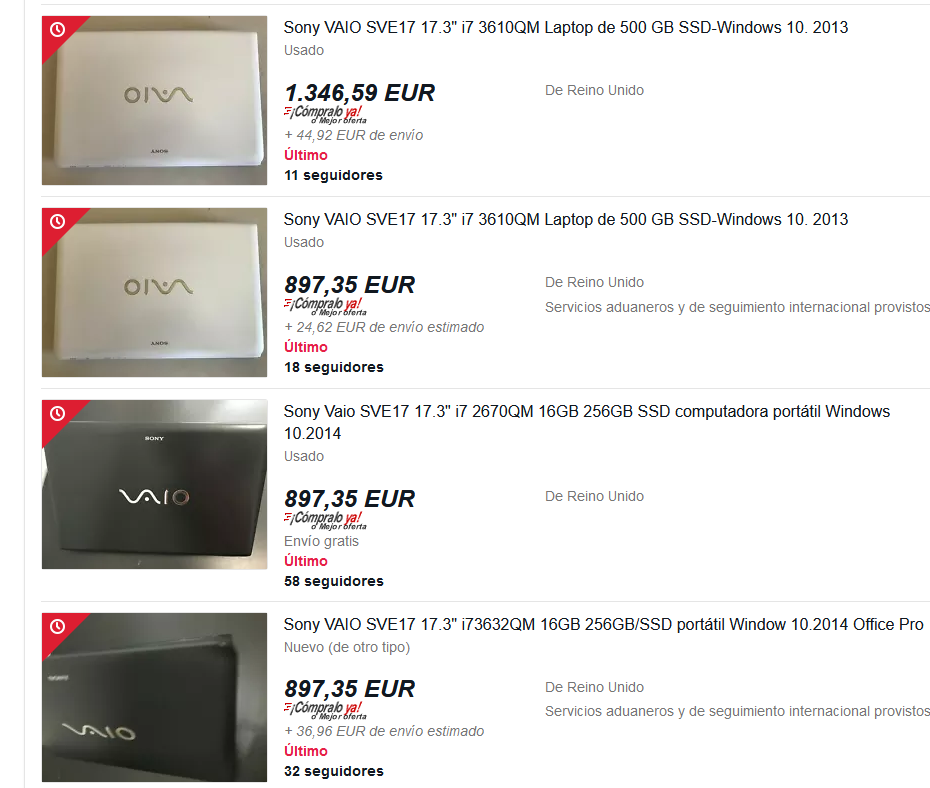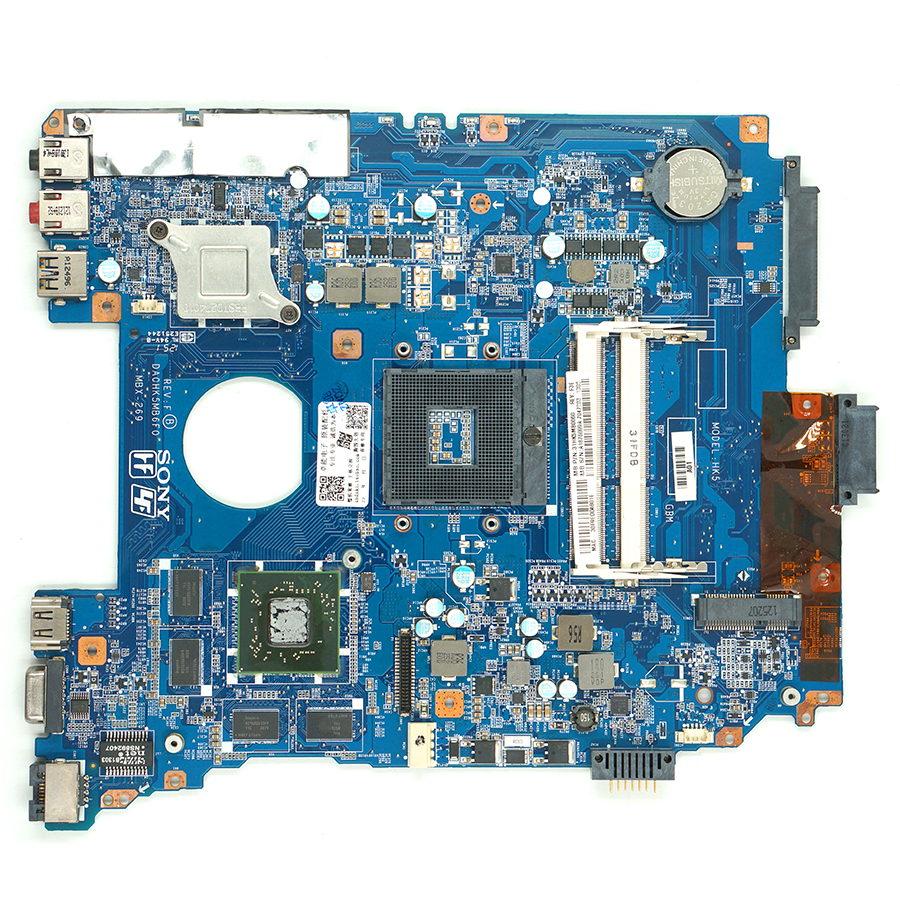
Article written in 2013 Sony Vaio SVE15
This article is not exactly an answer to the post "How and why I stopped buying new laptops" , but rather reflections on this topic. With a detailed argument why Sony Vaio SVE15 or SVE17 is an excellent option not only for its time, 2013-2014, but also for a modern user.
I must say right away that over the years I have tried a large number of laptop models from various manufacturers. My hobby is electronics repair, so I evaluated refurbished laptops (many dozen, if not more) from the point of view of replacing my old one. Among these devices were quite modern. And yet I did not find an alternative, moreover, I stopped looking and in the next few years I will not change anything. And that's why.
How and why I bought the Sony Vaio SVE17 for the first time
Sony's device, as far as I remember, is my second or third laptop. Before that, there were desktops. Then, when the trips around my country and the world began (not to say that I traveled directly to all cities and towns, but from time to time I had to), I realized that I needed a laptop.
Unfortunately, I don't remember my first laptops. What were these models, what manufacturers? One, like, the basic ASUS of the year 2011. I don't remember the details. Perhaps because he perceived it only as a working tool, and not as a NOTEBOOK. I only remember that the first worked long enough, then I gave it to my mother. The second - a couple of years, and then he started having problems with the plastic case, which began to crack in the most unexpected places. And it's not my fault - I treat technology with great care. And in general, it was not particularly fast, since I was saving on purchases, I needed almost a typewriter, plus the ability to surf, and nothing more.
Over time, the number of tasks that had to be solved with a laptop grew, the gluttony of applications increased.

Specifications:
- The diagonal of the screen is 17 inches.
- Processor - Intel Pentium (took the budget option, yes).
- RAM - 8GB DDR 3.
- 1 USB 3.0 port, 3 - USB 2.0.
- HDMI, VGA.
- Ethernet, WiFi, Bluetooth.
- DVD drive.
- Battery - about 2-3 hours.
Bought it for about $ 350. There were "big brothers" in that store with Intel Core i3, i5, i7, backlit keyboard, etc. But I needed a not very expensive and at the same time reliable laptop that would just work. The range of tasks that needed to be closed with its help - basically, editing documents, the simplest work with graphics, watching YouTube videos, working with FTP and Wordpress.
I have never regretted the purchase. He worked like a clock, and for many years.
Pros - I listed above, but I will briefly list it again:
- Not buggy, there were no problems at all.
- Withstood many trips, there were a couple of falls (albeit from a low height).
- Withstands heat at 45 degrees and cold.
- A workhorse that does what it has to do.
- Looks gorgeous, evoking positive emotions even during work. Maybe that's just me, but it's unlikely.
But there are a couple of additional advantages:
- The laptop is very easy to disassemble. The plastic is a bit fragile, but nothing critical.
- The processor is removable, not soldered on the board. So you can upgrade if needed.
- Two RAM slots, RAM is also not soldered on the board.
- It's relatively easy to change the graphics chip if it fails (we'll talk about this further, albeit a little).
Disadvantages:
- Heavy and large. I then wanted to buy a 17-inch laptop and I bought it. I felt every extra gram of him later during the trips, but did not complain. Then I decided that I needed to buy a 15-inch analog, but at that time I did not change anything.
- Heats up if not cleaned regularly. Actually, the laptop needs to be cleaned regularly and the thermal paste changed, we all know this. Sony Vaio is very picky about the absence of dust in the cooler - it starts to warm up. In models with dedicated graphics (and I had a built-in one), this often leads to problems in soldering balls, after which the graphics die, so reballing or replacement is needed (warming up in a Sony Vaio of this family does not help).
Further history of the laptop
Over time, I have slightly modernized the device:
- After a couple of years, I removed the DVD by installing an adapter for the SSD. The drive is small, 128 GB, exclusively for the OS. This immediately resulted in a huge performance boost.
- Added 8 GB of RAM (2 slots on the motherboard, added 8 GB with one bar). Performance increased even more, opening tabs in the browser, not counting.
- 27- LG HDMI VGA. , , HDMI-, .
In mid-2019, I decided to replace the Intel Pentium with an Intel Core i5. Here is a little more detail, so it's a separate item. It was a bad experience. As it turned out, if you replace Intel Pentium with Intel Core i3, i5, i7, then all this will work, but - only 30 minutes. Exactly half an hour later, the laptop turns off. Perhaps someone is aware of this problem, but at the time when I replaced the processor, there was not much information on the network regarding this upgrade, so I fiddled around for a couple of days until I realized that it was a hardware incompatibility. Only Pentium 2020M and 2030M can be installed. By the way, I read an article, the author of which solved the incompatibility problem by starting hibernation every 29 minutes with the help of the scheduler with an instant exit from it. For the user, everything goes unnoticed, and the laptop works without turning off every half hour.This user installed an i7 and enjoyed life.
But this option did not suit me, so I decided to sell my Sony Vaio.
Goodbye old friend
Looking at the prices for this model on eBay, I was surprised to see that they have not changed since the purchase. What's more, the cost actually went up: used Sony Vaio SVE17s sold at the same price I originally bought this laptop for.
For the top models, the price has actually doubled.

This is an example of a current eBay search for "Sony Vaio SVE17". Pay attention to the number of followers (seguidores). There is a demand for this product at such a price.
In general, I put my laptop first for 400 euros, not really hoping for anything. But, to my surprise, already on the second day after the lot was placed on eBay, offers began to arrive to buy a laptop at a lower price. True, the buyers were from other countries, and I did not want to send such a heavy laptop somewhere very far. So I waited, and about five days later I received an offer from a buyer from my country. We bargained for a bit and in the end the laptop went to the new owner for 350 euros.
I sold it in the same configuration I originally bought it with - 8GB of RAM and a DVD drive. I forgot to say that the condition of the laptop case was not bad, but it left much to be desired: small scratches, enamel slightly worn out in a couple of places and a small chip on the corner.
What then?
On the shelf I had several previously refurbished laptops from other manufacturers. Even before selling the Sony Vaio, I decided to use one of the 2017 ASUS models. It still had a VGA port and a DVD drive, so I was hoping to be able to use this laptop instead of the Sony Vaio.
With the configuration, everything was fine, including dedicated graphics from Geforce and Intel Core i5 (I don't remember the generation). Its only problem was the lack of a second RAM slot, but I decided that 8GB was enough for me, so I installed it as a working tool by connecting it to my two monitors.
This was a mistake, because from the moment when 8 GB was enough for me, office applications and instant messengers became heavier. I usually have WhatsApp and Telegram open on one monitor, on the second - an office suite, a browser with a mountain of tabs and a couple more applications. In general, even with an SSD, this laptop was noticeably slower than the Sony Vaio. If you open your laptop from time to time, you can put up with it. But if this is your main working tool, for which you spend many hours a day, then even small problems are annoying and stressful.

An example of a board where you can't upgrade anything without a BGA station. And with it there is a little sense.
It is clear that everything could be optimized. As the author of the article mentioned at the very beginning advised, you can roll back applications to older versions that work faster. But then a compatibility problem arises - something starts to glitch, something refuses to work at all, some programs start to conflict, plugins in browsers are disabled, etc. And this can be solved, but it takes time, which is already sorely lacking.
A time-saving solution is not to suffer, but to buy a modern laptop with DDR4, i7 and other necessary and useful elements. But - here the question of price and relevance of such a purchase already arises. I really didn't want to pay 500-600-1000 euros. I understood that if I bought a laptop now for 600 euros, I would get a small increase in performance and speed, but in six months the cost of the device would be 300-400 euros. I did not expect a repetition of the story with the price, as in the case of the Sony Vaio.
There were other laptops on the shelf, as mentioned above. But, since most were newer than the Sony Vaio, many did not have VGA, most did not have a DVD drive, which made it impossible to add an SSD. And some had only an M.2 SSD without the ability to add a regular SATA drive. Therefore, none were suitable to replace my "workhorse".
And hello old new friend
I didn't suffer for long - I started looking for a Sony Vaio with defects at a local online flea market at work and a few days later I found an SVE15 with Intel Core i5, dedicated video chip and 8 GB of RAM. Problem - The laptop was rebooting. It turns on, flashes the screen and is cut off. I decided it was a BIOS or power line problem and decided to take a chance by purchasing this laptop. It cost me only 60 euros.
We managed to fix it on the same day by flashing the BIOS. The problem was in him. As I suspect, the previous owner tried to update the firmware and for some reason the laptop turned off, after which the problems started.
After that, I rearranged the hard drive, SSD, RAM bar and got an excellent and productive system with Intel Core i5 (can be changed to i7), its own video chip and 16 GB of RAM. Let me remind you that the cost of the system is 60 euros + the time that I spent on searching, repairing, transferring hardware from one machine to another.

This is a Sony Vaio SVE15 motherboard - repairable, great for upgrades.It can
easily handle always open messengers, video calls, a browser with 5-20 tabs open (including Google Docs), YouTube with FullHD playback and several side tasks. This is all, I repeat, not one by one, but all together.
Why I won't update my laptop in the next few years
There are several important factors that go into the decision not to buy a new laptop.
- . . « — », , . , , , HD (4K «», , , — 4K).
- . «», , HDMI VGA, DVD, USB-.
- . 60-100 , , , . . , , , - 250-300 , . , 2-3 , , . — , .
- . .
- . — , «». - , . , , . — , , BGA-.
- . , «», . . Aliexpress 12 .

«»
- , , , . , . — . , — Apple.
